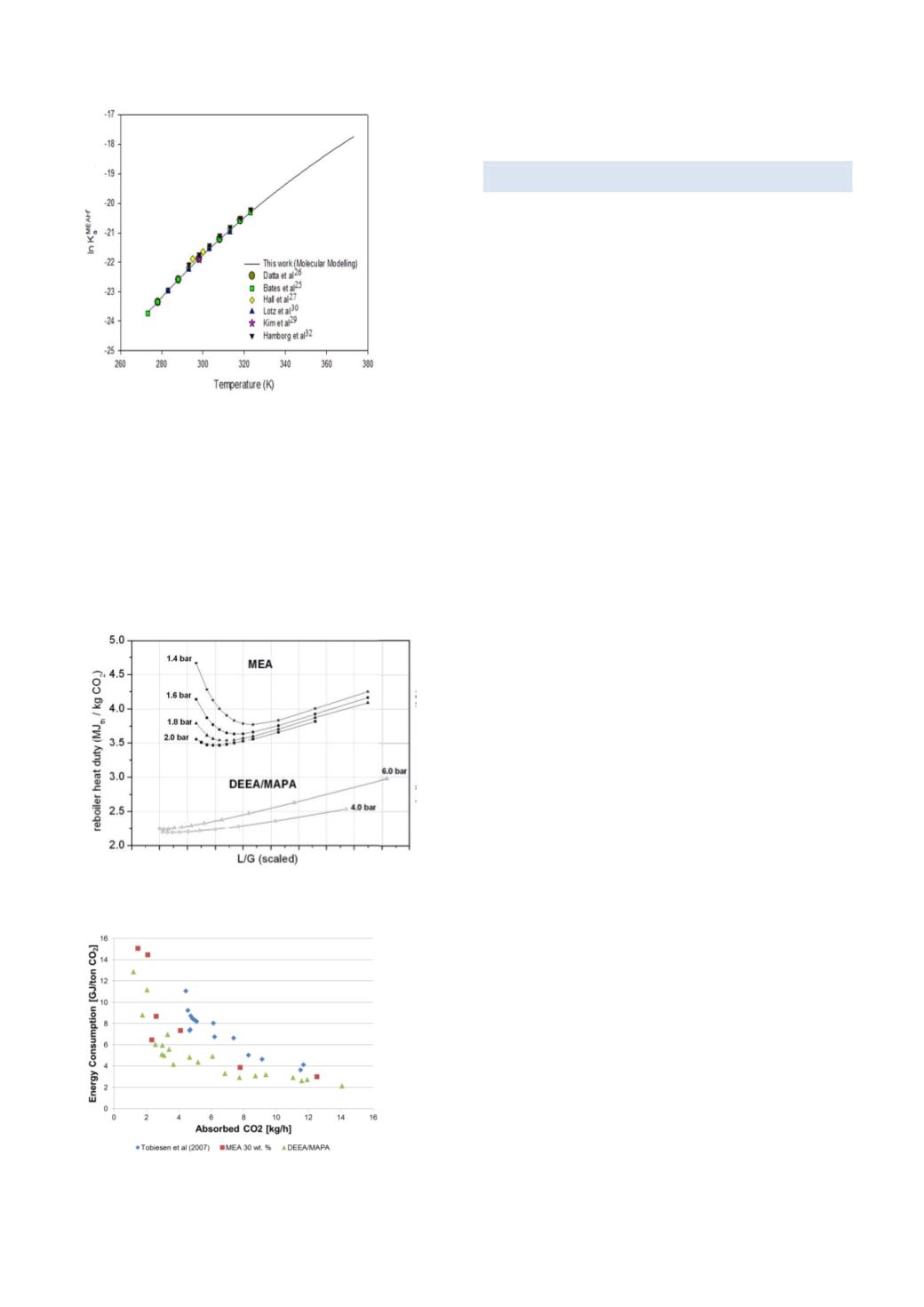

Department of Chemical Engineering
Annual Report 2015
28
Molecular modeling results of the protonation constant,
and heat of protonation of MEA compared to
experimental results.
In the iCap project a new liquid/liquid solvent systemwas
simulated in CO2SIM and tested in pilot runs. In the
figure below the predicted specific reboiler duty in this
system is compared with MEA, and some results from
the pilot campaign are shown.
Results from CO2SIM.
Experimental specific reboiler duty from the lab-pilot for
DEEA/MAPA system and for 30wt% MEA.
PROCESS DESIGN
A process design is to a large extent a consequence of
developments on catalyst, choice of reaction routes,
selection of solvent system, fluid type etc. At this level of
development, the structure of the chemical system and
the kinetics are determined. Much research is focused on
these topics because even incremental improvements
may have large economic consequences. The next major
step is to find a suitable reactor and process in which to
deploy the system on a larger scale. The traditional way
of doing design of new processes is by selecting reactor
type and process configuration based on comparison to
a similar known system. Design choices are often made
on the basis of past experience or trial-and-error using
laboratory tests and repeated simulations. These
activities are necessary. However, it is not likely that the
traditional way alone will lead to the best possible
process configuration and design. Complementary tools
and methods are needed to lead the design engineer
onto the path of optimal design. Deviations from the
optimal design will lead to unnecessary loss of product
yield, unnecessary large volumes and loss of energy.
Within the conceptual process design activity some of
the most important choices are made, which have large
consequences on the profitability and environmental
loads of the final process technology. According to
Douglas (1988) the conceptual design of an integrated
plant can be broken down into a hierarchy of decisions
and organized into different levels of activities. Among
the levels of activities are reactor-separator-recycle
structures, heat integration, and separation train
sequence design. A method in focus here is a systematic
procedure based on shortcut models. A path is a line of
production on which basic operations or functions take
place. Reactants pass through a series of functions or
basic operations to form the desired products. The basic
operations are represented by design functions on the
volume path. The design functions are fluid mixing
(dispersion), distribution of extra feed points,
distribution of heat transfer area and coolant
temperature, catalyst dilution distribution and more.
The conceptual reactor design problem is solved as an
optimal control problem. Parameterization of the design
functions and the state variables are applied. The
realization is a staged process string of multifunctional
units.


















